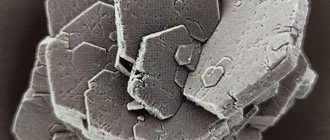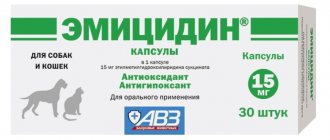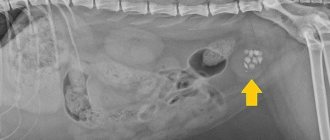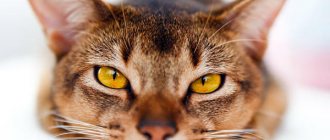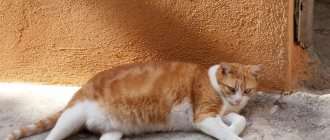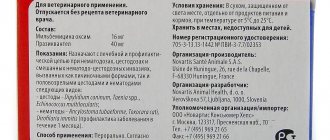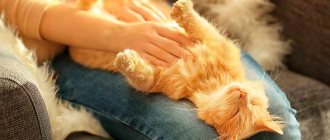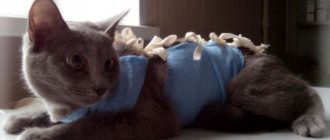On average, a cat reaches puberty between 5 and 12 months of age. In rare cases, a cat may become ready to conceive at 3.5 months. For other females, the maturation process may be delayed until they are 18 months old. If your cat has not started to come into heat after a year and a half, she needs to be seen by a veterinarian.
The following factors influence the age of puberty:
- weight;
- health status;
- conditions of detention;
- season;
- length of daylight hours;
- breed;
- heredity.
Often, in short-haired breeds, maturation occurs earlier - by 6 months, while long-haired breeds become ready for conception only at one year of age.
The cat's readiness to mate is marked by the onset of the first heat. During this period, the animal's behavior changes significantly.
Signs of estrus:
- The cat takes an unusual pose: it presses its front paws to the ground and raises its butt.
- The female cannot find a place for herself, walks all over the house and meows desperately.
- Refusal to eat.
- Insistent attention towards the owner, or vice versa, complete ignoring of him.
Although a cat can become pregnant during her first heat, her body is not yet fully prepared for such stress. Experienced breeders allow a female to be bred only on her second or third heat.
Breeders allow domestic cats to breed until the age of six. In rare cases, breeders also work with older cats for selection purposes. Since pregnancy at this age is associated with serious risks, only animals that are valuable for breeding (for example, an unusual phenotype) are allowed for breeding.
Signs of pregnancy
The first signs of pregnancy in a cat may appear 1-2 weeks after mating. They manifest themselves in changes in behavior, which are caused by changes in hormonal levels. The cat becomes less active. Appetite either increases or decreases. However, these signs may be completely absent in the early stages, or they may indicate not pregnancy, but a disease of the female.
Over time, the cat may begin to vomit. Behavior also changes. The pet either becomes more demanding of attention, or, on the contrary, may begin to avoid the owner. The nipples swell, the skin around them peels off, and fluid is released from them. The stomach becomes denser.
At week 5, the belly becomes significantly larger. After this, it will constantly increase in width. At week 7, when you touch the belly, you can feel the kittens moving.
Features of the first pregnancy
A pet can become pregnant immediately after the onset of the first heat - at 7-8 months. At this age, the body is formed for fertilization, but is not yet ready for safe bearing of offspring. Because of this, mating is carried out only on the third heat.
- The arousal stage corresponds to the period of maximum readiness of the animal for conception. Changes in the genital organs occur under the influence of gonadotropic hormones. In this case, the appearance of estrus is observed, which is characterized by swelling, edema and hyperemia of the vulva, and the release of mucus from the loop. Sexual arousal is accompanied by a change in the pet’s behavior - the cat becomes restless, active, and its appetite decreases. Next, the heat stage is formed, which is characterized by the female’s readiness to mate; at this moment she looks active and restless. Ovulation is the release of a mature follicle. This process in cats has its own peculiarity - the mechanism starts only after sexual intercourse after 1-2 days.
- The period of inhibition indicates a decrease in sexual activity. At this moment, the cat’s estrus ends: the mucous membranes of the genital tract return to their normal state, and the secretion of mucous secretion stops.
- The balancing period is characterized by the restoration of the cat's behavior and lack of attraction to males.
A cat can become pregnant immediately after the first heat, but it is best to breed at the age of 1.5 years
Young animals are bred at approximately 1.5 years. This reduces the risk of miscarriages and the birth of kittens with serious pathologies. If your furry pet becomes pregnant for the first time, then all the symptoms are more pronounced.
The safety of mating decreases after 6 years. At this age, breeding animals are sterilized. If you do not plan to breed the breed, sterilize your pet immediately after reaching maturity. This will reduce the risk of developing cancer to 0.5%.
A cat's first gestation is exciting for the owner. If a person can say what bothers him, then an animal cannot. Therefore, we do not always understand how this period proceeds, especially for the first time. The first and subsequent pregnancies last the same. The duration depends on the breed, emotional state, age, number of fruits. But the period should not be less than 60 days or more than 72 days.
Factors on which the period depends
How long a cat will walk while pregnant depends on many factors: its breed, age, condition, number of kittens, etc.
How long does pregnancy last and how does it proceed?
In a cat, pregnancy lasts on average 60 to 65 days. The minimum permissible period for childbirth is 58 days, and the maximum permissible is 71 days.
The duration of pregnancy in a cat is influenced by the following factors:
- Female weight. Thin cats give birth earlier than overweight cats.
- How long does a cat bear fruit? The more kittens, the faster the birth will begin.
- The age of the cat and the number of births. The first pregnancy of a young female often ends in early birth and the birth of weak offspring.
- Breed. Short-haired breeds (Rex, Abyssinian, Russian Blue, Siamese) give birth to kittens 4-5 days earlier than long-haired breeds (Siberian, Neva Norwegian).
- Ordinary yard cats give birth to viable and completely healthy offspring earlier than purebred cats.
Normal pregnancy
How does a cat's pregnancy progress by week?
| Term | Appearance and behavioral changes | How the fetus develops |
| 1 Week | Slight decline in activity, change in appetite | Fertilization of the egg occurs and its attachment to the wall of the uterus |
| from 2 to 3 weeks | Vomiting, toxicosis, decreased appetite, significant decrease in activity | The placenta is formed. The embryo has a visible head and tail |
| 4 week | Nipples turn pink and swell. The cat requires attention and affection from the owner. The abdomen is slightly tight | The formation of internal organs occurs. On ultrasound, you can hear the kittens' heartbeat. The size of each baby reaches 20 mm |
| from 5 to 6 weeks | The abdomen is significantly rounded. When palpated, you can feel the fruits and their movement. The female sleeps and eats a lot | Development of bones, muscles, and nervous system occurs. The body is covered with fur, and claws appear on the paws. The size of babies is 40-60 mm. |
| from 7 to 8 weeks | The abdomen increases greatly in size. The movements of kittens can be seen with the naked eye. The cat goes to the toilet often. Eats small meals often | The fur is finally formed. The x-ray shows the formed bones and spine. Babies begin to develop reflexes |
| Week 9 | The stomach drops towards the hips. The cat begins to look for and arrange a nest. Appetite drops | Kittens reach a size of 13 cm. At 60 days of pregnancy they are completely ready for birth |
False pregnancy
In some cases, after mating, conception does not occur, or the embryos do not attach to the uterus. There is a hormonal imbalance in the cat's body. She begins to behave like a pregnant woman: she sleeps and eats a lot, sets up a place for lambing, her nipples swell. In the early stages, only a specialist can distinguish a real pregnancy from a false one using ultrasound.
A false pregnancy may occur for the following reasons:
- hormonal disbalance;
- heredity (breeds in which this problem most often occurs: Oriental, Rex, Sphynx);
- male sterility;
- psychological stress;
- excess weight;
- the presence of another pregnant cat nearby.
False pregnancy is not very dangerous for the female’s body if it is not a frequent occurrence. Constant hormonal imbalances can lead to diseases of the reproductive system. To reduce the risk of false pregnancy, the following measures should be taken:
- a non-sterile cat must participate in breeding;
- it is necessary to monitor the health of your pet;
- the diet must be balanced;
- You should protect your cat from stress.
Superfetation
Superfetation is a rare phenomenon that sometimes occurs in felines. It consists in the fact that an already pregnant cat may go into heat, resulting in fertilization again. Most often this happens due to hormonal imbalance in the body. In this way, the female will carry kittens conceived several weeks apart. Often the interval between conceptions is 3-6 weeks.
Most often, such pregnancies in cats have a sad outcome. Both litters are born together, which is why the younger, underdeveloped kittens die. Less often, a cat gives birth to older kittens first, and then younger ones a few weeks later. In this case, the owner may be faced with the problem of a cat’s lack of nipples and milk for the entire litter. The owner will have to supplement the babies artificially.
Frozen pregnancy
Sometimes some or all embryos die during fetal development. Only a veterinarian can make an accurate diagnosis after an ultrasound. Indirect signs that indicate a frozen pregnancy: the cat’s belly stops growing, the kittens do not move. If the kittens begin to decompose, intoxication of the body occurs: the body temperature rises, vomiting begins, and refusal to eat. If urgent measures are not taken and the embryos are not removed, the cat will die.
Sometimes, in the case of a frozen pregnancy, the cat immediately miscarries. Also, in some cases, if not all kittens died, the cat gives birth to babies on time. Dead embryos are released along with live kittens.
Maine Coon pregnancy
Maine Coon Gestation Period
Many owners ask the question “How long do pregnant Maine Coon cats walk?” The gestation period of Maine Coons is usually longer than that of other cat breeds. How long does Maine Coon pregnancy last? Typically, the Maine Coon's gestation period is nine weeks (65 - 68 days).
If you provide the cat with normal living conditions, Maine Coon pregnancy is quite easy.
How to care for a pregnant Maine Coon cat
There are recommendations to follow:
- Give your cat vitamins after consulting with your veterinarian.
- Vaccinate your Maine Coon cat and give it anthelmintic before mating. If you don’t have time, wait until the birth or, if helminths appear, for example, consult a veterinarian on how best to proceed.
- Make sure that your Maine Coon cat does not make sudden movements during the last weeks of pregnancy.
- A few days before the expected birth, give your Maine Coon cat as much attention as possible. It's good if you can take a vacation during this time.
- You should not take your Maine Coon cat to shows or on trips during pregnancy. Stress can negatively affect both the cat's health and the kittens' development.
In the photo: Maine Coon. Photo: pxhere.com
Possible complications during pregnancy of a Maine Coon cat
One of the most common complications during Maine Coon pregnancy is miscarriage. The cause of miscarriage in a Maine Coon cat may be careless handling or roughness, poor nutrition, overheating or hypothermia, infections, or hormonal disorders.
Diagnosis of pregnancy and precursors of childbirth
External symptoms of pregnancy may be false. In the early stages, only a veterinarian can diagnose pregnancy.
The following diagnostic methods exist:
- Blood test for hormones. Until the 30th day of pregnancy, the amount of progesterone in the blood increases significantly. 25 days after ovulation, the level of the hormone relaxin increases in the body.
- Palpation. At day 25 of pregnancy, the doctor can feel the embryos in the cat's abdomen.
- From 3-4 weeks, an ultrasound will help determine pregnancy.
- On the 40th day after mating, the skeletons of the kittens are visible on x-ray.
- A stethoscope can help you listen to the heartbeat of kittens in late pregnancy.
You should not palpate the cat’s belly yourself, as this can harm the female and kittens.
Signs that will help you understand that your cat is going into labor:
- The female eats less than usual or refuses to eat at all.
- The cat is acting restless and rushing around the house.
- The cat constantly licks the area between its hind legs.
- Breathing becomes frequent and shallow, shortness of breath appears.
Sensing the approach of birth, the cat will settle in its nest and will not leave until everything is over.
Signs of approaching labor
A week before giving birth, the cat begins to lick itself more often, especially the abdominal and genital area. She begins to climb through cabinets and look for a place for a nest. At this time, it is worth showing her the birth box. If she suddenly gives birth in another place, then immediately after giving birth, transfer her and the kittens to a box. From the 61st day of pregnancy, you can take your cat's temperature daily. 12-24 hours before birth, it drops from 38.6 to 37.5 or lower (but this moment can be skipped); normal temperature is not a sign that the cat will not begin to give birth in a few hours.
Rules and features of caring for a pregnant cat
Pregnancy is a complex process when the female body spends a lot of energy to bear healthy offspring. This is why a pregnant cat needs special care. Your pet needs to be protected from stress and anxiety. If there are small children living in the house, you need to explain to them so that they do not bother or pick up the cat.
A pregnant cat should not jump to great heights. Therefore, it is better to temporarily block access to cabinets, refrigerators and high shelves.
A pregnant cat should not be vaccinated or given anthelmintics. Prevention of infectious and parasitic infections should be taken care of before mating.
A pregnant cat should be played with, as a decrease in activity can lead to obesity. But you can’t overwork your pet. As soon as the cat gets tired, she needs to be given the opportunity to rest.
It is important to isolate the cat from the cat not only before birth, but also after. A cat can become pregnant again even while nursing kittens. In some cases, females are ready to breed again 1.5-2 weeks after giving birth. A second pregnancy will not have the best effect on your pet’s health.
Necessary preparation
After successful conception, the formation of future kittens begins, which takes 60-65 days. During this time, it is recommended to find a veterinarian who is ready to provide emergency medical care at home in case of complications.
Arrangement of the place
During and after birth, the cat will need a secluded corner. It is better to prepare it in advance. Otherwise, the pet will hide under the sofa, which will prevent free access to her and the kittens. To build and equip a “maternity hospital” you will need:
- Big box. Make sure that it will accommodate not only the new mother, but also her offspring.
- Soft bedding or blanket. Place a disposable baby diaper under them to prevent the cardboard from getting wet.
- Bowls for water and food. You also need to add a tray. After giving birth, the cat should rest and not run to the other end of the house to relieve itself.
We invite you to read: Valerian for cats: action, reaction, harm and benefit, where does such love come from?
The constructed space must be accessible and spacious. Isolate it from possible threats (children, other pets, drafts) by choosing the quietest and most secure room in the house.
A week before the onset of a responsible time, prepare an “alarm suitcase”. He must be kept close until contractions begin. The content should be as follows:
- antiseptics and Oxytocin;
- small syringe;
- cotton pads and gloves;
- water container;
- separate box for newborns;
- clean towels or cotton fabrics;
- sterile threads and napkins;
- warmer;
- pipette and rubber bulb;
- scissors disinfected with alcohol;
- dry milk mixture.
All these things should be stored in one place. The number of tools and materials needed depends on the severity of the lambing.
What not to do
Cats usually give birth when it's late afternoon or even night. During this time, your pet should not be left alone.
Take care of completing all the tasks in advance and give your pregnant pet maximum attention
In case of complications, contact your veterinarian immediately. Trying to fix the problem yourself can kill the animal. Also, avoid using Oxytocin until the last minute. This drug is used to stimulate labor strictly in the presence of certain factors. If the process takes too long, but is not accompanied by complications, be patient. The body will cope with the birth of babies on its own at a pace that is convenient for it.
Shelter and nest for a pregnant cat
The cat should have its own quiet and secluded place where it can rest peacefully. It is better to place the bedding or house in a closed place, protected from drafts and direct sunlight. If the female finds the place secluded and protected enough, she will give birth to kittens there.
2 weeks before lambing, you can place a pre-prepared “nest”. It can serve as a cage, arena, exhibition tent or an ordinary cardboard box. A light cloth or diaper should be placed at the bottom. If the apartment is cold at the time of birth, a warm heating pad should be placed in the nest. They shouldn't be too hot. There must be drinking water near the house.
If the cat chooses another place to give birth, you should not move it.
Diet
Much attention should be paid to the pet's diet. A cat that eats commercial food should be switched to special food for pregnant women. If your pet eats natural food, low-fat fermented milk products, liver, and cereals should be included in the diet. Also, after consulting a veterinarian, the female should be given additional vitamins and mineral supplements. Serving sizes should be appropriate for the size, age and breed of the cat. You cannot overfeed the female, otherwise she may develop obesity, which will have a bad effect on pregnancy. Since growing kittens slightly compress the stomach, you should feed your pet more often. In this case, the daily portion of food can be increased by no more than 10%.
Feeding with prepared food
Dry food for a pregnant cat should be of high quality.
In principle, the animal can be fed with ready-made “drying”, especially if it is accustomed to it. But in this case, they focus on food specially created for such an interesting situation. It is very important to use only high-class products in your diet - no less than premium.
It is clear that ready-made food is a convenient invention and does not require any effort from the owner at all:
- no mental ones - everything has already been thought out and compiled for you;
- neither physical - I poured it in and forgot.
But you still have to strain:
- firstly, not all food is suitable for a particular animal, and trying to change something during pregnancy is fraught with problems: allergies, digestive disorders and even miscarriage;
- secondly, it is necessary to study the composition of the finished menu and draw a conclusion from it about the quality of the ingredients and their health benefits;
- thirdly, the food is poured not from a lantern, but strictly following the instructions and standards indicated on the packaging: both a lack and an excess of nutrients will lead to negative consequences;
- fourthly, about changing the food: if your company does not produce products for pregnant women, then there is no need to change anything. It is better to try to calculate the portion of your usual food for a specific period of pregnancy (at least simply increase the standard daily dose by the same 10% or 50%). This will be much more rational than looking for something new and conducting unjustified experiments. Why? See point one!
Complications during pregnancy
Pregnancy is a complex process associated with great risks to the life and health of the pet. The cat's well-being should be closely monitored throughout pregnancy.
Symptoms that should promptly contact a veterinarian:
- Complete refusal to eat, which lasts more than a day.
- Apathy, weak reaction to stimuli.
- Significant increase or decrease in body temperature.
- Heavy, intermittent breathing.
- Discharge from the loop. The liquid may be pink, red, green or yellow. It may smell unpleasant.
Premature birth and post-term pregnancy are equally dangerous for a cat. If kittens appear earlier than 56 days after conception, the birth is considered premature. Kittens that the cat has carried for at least 50 days can be released. If the babies appeared earlier, they will die.
A pregnancy is considered post-term if the babies have not appeared on the 70th day after conception. Most often, the absence of birth indicates that the kittens have died. In this case, the cat needs urgent surgery, otherwise sepsis may develop. Sometimes cats carry live kittens to term, and the babies are born quite healthy, only later. In any case, only a doctor can find out exactly the cause of a post-term pregnancy using an ultrasound.
How to act when giving birth to a cat
So, the crucial moment is approaching - your pet’s birth. Don’t rush to worry, because a lot depends on you too. It is you who will observe the birth process, in a difficult situation you will be able to provide first aid and, possibly, save the lives of little kittens and their mother.
Preparing for childbirth
To give birth to a cat, you may need the following items:
- disposable diapers;
- gauze napkins 20x20;
- thick silk threads for tying the umbilical cord;
- scissors with rounded ends;
- medical alcohol for sterilizing scissors;
- hydrogen peroxide;
- synthomycin ointment;
- streptocide powder;
- a small syringe for sucking liquid from a newborn’s nose;
- an unbreakable vessel with water (this is where you will place the afterbirth);
- heating pad for newborns.
Video: what to prepare for the birth of a cat
Signs of approaching labor
If the cat does not eat anything and tries to find a secluded place, this means that birth is near. Approximately 12–14 hours before giving birth, the cat's body temperature begins to gradually decrease and usually reaches 37.8 0C. The cat may meow a lot, becomes restless and excited, and carefully licks its body.
If a pregnant cat begins to look for a secluded place, behaves restlessly and meows incessantly - these are sure signs that labor is approaching.
Correct actions during childbirth
Childbirth, as a rule, lasts from 2 to 3 days. Stages of childbirth:
- Stage 1. Mild contractions and opening of the cervix. There is scanty bleeding. The abdomen is tense and hard. The cat is in severe pain and meows. The owner must be nearby to calm the pet. The duration of the first stage is up to 36 hours.
- Stage 2. Quite strong contractions with the release of water. You need to pay attention to the color of the water, since a dark or bloody color indicates bleeding (in this case, you should call a veterinarian). After the water breaks, the process of giving birth to kittens begins. The first kitten is born longer than others, but if after 3.5–4 hours it is still not born, call the veterinarian immediately.
- Stage 3. Calm state of the cat in the intervals (from 5 minutes to 3-4 hours) between the birth of kittens. At this time, the cat licks the newborns and gives birth to the placenta.
The cat itself gnaws the umbilical cord and licks its baby. The kitten is born in the fetal bladder, but usually the cat breaks it so that the cub does not suffocate and die. Sometimes the cat doesn't do this. In this case, responsibility for this falls on the owner:
- Take scissors with rounded ends, sterilize them with alcohol and cut the bubble film.
- Proceed with extreme caution so as not to harm the kitten.
- After removing the kitten from the bubble, wipe it with a diaper, paying special attention to its face.
The liquid in the bladder can get into the kitten's nose; if this happens, you need to carefully and thoroughly wipe his nose or suck out the liquid with a syringe. It’s good if, after bursting the bladder and wiping its nose, the kitten breathes, squeaks and moves. If this does not happen, liquid has probably entered the kitten’s respiratory tract. In this case, the cub is very carefully taken, turned over with its nose down and gently shaken, while holding its head, or gently bend it several times into an arc so that the hind legs touch the chest. This must be done until the kitten begins to breathe. Afterwards, his face needs to be wiped.
Particular attention should be paid to how the kitten breathes and to its tongue. The newborn's breathing should be smooth and without wheezing. The tongue should be pink; if it acquires a blue tint, this means that it lacks oxygen. In this case, you need to immediately take a soft cloth and wrap the kitten in it; after that, lower it head down until the first inhalation.
The breathing of a newborn kitten should be without wheezing and even, and the tongue should be pink.
If for some reason the cat cannot gnaw the umbilical cord, then you need to take scissors and wipe them well with alcohol. Then proceed as follows:
- Drag the umbilical cord with a thread one or two centimeters from the kitten's tummy and carefully cut it 1 cm above the thread. Proceed as carefully as possible!
- Lubricate the incision site with iodine.
- Tighten the umbilical cord as tightly as possible, because if the thread comes undone before the umbilical cord heals, the kitten may die from blood loss.
During childbirth, the cat is in an excited state and can seriously injure the kitten by rupturing the fetal bladder or gnawing the umbilical cord. Therefore, the owner needs to carefully monitor her. If this is her first birth, it is better to help her perform all the necessary manipulations or do everything for her.
Before the birthing process is completed, the kittens should be thoroughly dried with a diaper, separated from the cat for a while, and placed in a warm place (maybe in a basket with a warm, but not hot, heating pad or a bottle of warm water covered with a soft cloth). After the birth is completed, the kittens are returned to their mother.
If the kitten's umbilical cord does not dry out within one to two weeks, contact your veterinarian immediately: the remaining section of the umbilical cord may rot and the kitten will die from blood poisoning.
It also happens that after the birth of several kittens, a period of rest begins for up to 12 hours. The cat behaves as usual after giving birth, but there are clearly still kittens in the stomach. Don't worry - labor will resume in 5-12 hours.
The following birth complications may occur:
- The kitten's head is visible, but it is not born for a long time. It is necessary to lubricate the cat's genitals and the fetal head with Vaseline. After this, the process returns to normal.
- Mechanical blockage - the fetus is too large or does not lie correctly, the cat cannot give birth to it. In this case, stimulant drugs cannot be used, as this can lead to rupture of the animal’s internal organs. It is better to urgently call a doctor who will take all necessary measures.
- Uterine atony - the contraction force is not enough to release the fetus. This complication occurs in multiple pregnancies, when 4 or more kittens are born. The uterus responds well to oxytocin injections, the first of which can be done independently. 0.2–0.3 ml of the drug is injected into the withers once. At this time, the birth canal should be open. If the contractions slow down after the injection and the kitten is stuck in the birth canal, it must be carefully released by pulling it out by the skin. However, remember that there are several contraindications for oxytocin injections: scars on the uterus;
- mechanical blockade;
- renal failure;
- intestinal obstruction;
- individual intolerance;
- tachycardia;
- bronchospasm;
- Fruit size is too large.
At the end of labor, be sure to count the number of placentas. It should be equal to the number of kittens. If there are fewer placentas, this means that some remained in the birth canal. This threatens serious inflammation, so you need to call a veterinarian.
After the birth is over, the cat needs to be given complete rest, a tray and a bowl filled with food should be placed next to it. This is necessary so that she does not go far and for a long time from the kittens. For some time, no one except the owner should approach the cat, otherwise she may hide the kittens, and it will be difficult to find them. Your pet should be given food four or five times a day in small portions. You need to clean your cat's litter once a day. There should always be fresh and clean drinking water close to the cat. Some nursing cats may have seizures due to a lack of calcium in the body. If you notice this, you should call your veterinarian immediately.
There is an opinion that for better lactation, a cat should be given one or two afterbirths to eat. But in the wild, a cat eats the afterbirth in order to hide the smell of the cubs and to facilitate childbirth. The first afterbirth contains the hormone oxytocin in large quantities, which stimulates labor, so it is better to give only this to the cat. Don't give more than one or two, otherwise your cat can easily get an upset stomach.
After giving birth, the cat should be given time to rest and feed the kittens.
Artificial termination of pregnancy
There are often no medical indications for induced abortion in cats. Non-viable kittens themselves die in utero. Then they come out naturally or are removed surgically. In most cases, a cat has an abortion at the request of the owner.
There are two types of abortion in cats: medical and surgical.
Medication
- At 3-6 weeks of pregnancy, the cat is given prostaglandins, which cause miscarriage.
- At 6-9 weeks, abortion is performed using glucocorticoids.
Surgical
- Without sterilization: incisions are made in the uterine horns through which the fetuses are removed. The operation is performed on days 15-36 of pregnancy. This is a complex and expensive surgical procedure.
- With sterilization: the uterus and ovaries are removed. The operation is performed before the 7th week of pregnancy.
Often, medical abortions also end in surgical intervention due to the high risk of complications.
Abortion in most cases leads to the loss of reproductive function in the cat. In addition, the animal receives serious stress. Therefore, it is better to sterilize your cat before she becomes pregnant.
The female spends a lot of her body’s resources on pregnancy and childbirth. To ensure that cats have time to recover, experienced breeders breed them no more than once a year. It is worth noting that this process does not add health to the animal, but rather shortens the life of the female and puts her at risk of various complications. That is why it is worth breeding only animals that have value for breeding work. It is better to sterilize outbred cats.
Why detect a cat's pregnancy in the early stages?
Despite the fact that a cat's body is designed to survive in the wild, care and monitoring of pregnancy are very important. The sooner the owner finds out that she is pregnant, the more time she will have to prepare for the arrival of the babies. For your information! The ability to bear kittens occurs at different ages in each breed. For example, British cats are ready for their first pregnancy only after 1 year of life. It is especially important to monitor the condition of purebred animals (for example, sphinxes, folds). Some breeds may have difficulties during pregnancy and birth. In addition to being monitored by a veterinarian, owners must be able to independently handle the cat during labor if assistance is needed.
I am pregnant?? - Can't be…



